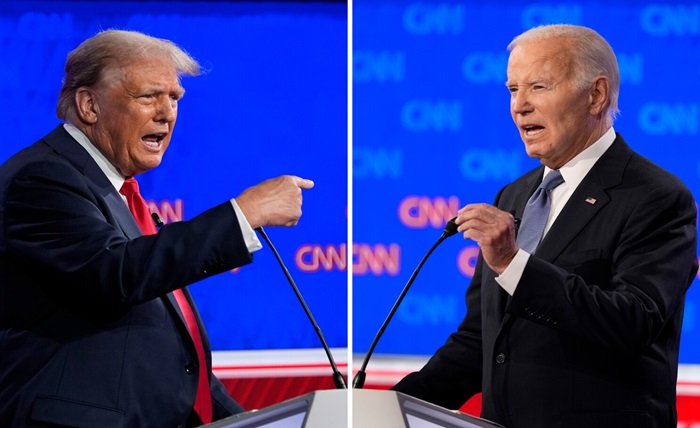Introduction: The Battle for Eyeballs in the Digital Age
The streaming wars have redefined how the world consumes entertainment. What began as a competition between Netflix and Hulu has exploded into an all-out battle among giants like Disney+, Amazon Prime Video, Max, Apple TV+, and new contenders. With billions invested, companies are racing to capture your attention—and your subscription fee.
But in 2025, the battlefront is shifting. As consumers face subscription fatigue and rising prices, platforms must adapt or risk extinction. This article explores who’s winning the streaming wars, which companies are struggling, and how these dynamics impact content creators, marketers, and business owners.
What Are the Streaming Wars?
The term “streaming wars” refers to the fierce competition among streaming services to dominate digital media consumption. With traditional cable in decline, every major entertainment company is building its own platform to control content distribution and monetize subscriptions.
This competition influences:
- Pricing models (subscription vs. ad-supported)
- Content acquisition and production
- Global expansion strategies
- Consumer loyalty and churn rates
The Front-Runners in 2025
1. Netflix: Reinventing to Survive
Netflix remains a global leader, but not without challenges. Following consecutive subscriber declines in 2022 and 2023, the platform realigned its strategic focus.
Winning Strategies:
- Crackdown on password sharing
- Introduction of an ad-supported tier
- Increased investment in global content (especially Korean, Indian, and Latin American series)
Despite fierce competition, Netflix’s early-mover advantage and strong brand identity keep it relevant.
2025 Subscriber Count: Over 280 million globally
2. Disney+: Content Powerhouse With Franchises
Disney+ leverages its powerful intellectual property (IP) to stand out. With franchises like Marvel, Star Wars, Pixar, and National Geographic, Disney has carved out a loyal user base.
Key Moves:
- Bundling with Hulu and ESPN+ for diversified content
- Expanding original shows like The Mandalorian and Loki
- Licensing deals to other platforms to maximize revenue
2025 Subscriber Count: 210+ million globally
3. Amazon Prime Video
Bundled with Amazon Prime membership, it’s a value-add that most households already pay for.
Strengths:
- Major hits like The Boys and Reacher
- Expanding into sports (Thursday Night Football, Premier League rights)
- Leveraging AWS and AI to improve personalized recommendations
2025 Subscriber Count: Estimated 250 million+
Challengers and Dark Horses
4. Apple TV+: Quality Over Quantity
Apple TV+ has adopted a premium strategy—fewer shows, but higher quality.
Challenges:
Smaller library, limited global market penetration
Yet Apple is playing the long game, integrating content into its ecosystem of devices.
5. Max (formerly HBO Max): Consolidation Challenges
After the Warner Bros. Discovery merger, HBO Max rebranded to Max. While it has strong shows like Succession, Euphoria, and House of the Dragon, brand confusion and content cuts have hurt its reputation.
Key Issue:
Cutting shows for tax write-offs hurt consumer trust
6. Paramount+ and Peacock: Fighting for Relevance
Both platforms have improved in 2024–2025 with stronger original content and live sports, but they still struggle to compete globally.
Pros:
- Access to CBS, NFL, and live news
- Lower-cost ad-supported tiers
Cons:
The platform faces challenges with limited international reach and a smaller portfolio of original intellectual property.
What This Means for Entrepreneurs and Marketers
1. More Advertising Inventory
The rise of ad-supported streaming (FAST channels like Pluto TV, Roku Channel, and even Netflix’s ad tier) means more accessible advertising space.
Actionable Tip:
Marketers should explore Connected TV (CTV) ads to target niche demographics affordably and effectively.
2. Brand Collaborations with Streamers
As streaming platforms look to monetize beyond subscriptions, product placements and brand integrations have surged.
Example:
Brands like Peloton and Red Bull have partnered with streaming shows for subtle yet powerful in-scene exposure.
Actionable Tip:
Business owners can consider sponsorship or content placement deals with streaming content that aligns with their audience.
3. Content Creation Opportunity
Streaming’s hunger for original content creates opportunities for indie creators, especially in international markets or niche genres.
Actionable Tip:
If you’re a content creator or media entrepreneur, consider pitching content to emerging platforms or licensing globally.
Streaming Platform Comparison Table
| Platform | Subscriber Count | Strengths | Weaknesses |
| Netflix | 280M+ | Global reach, originals | Price hikes, content fatigue |
| Disney+ | 210M+ | Franchise dominance | Limited adult content |
| Prime Video | 250M+ | Value bundling, sports | UI/UX complaints |
| Apple TV+ | 80M+ | High-quality originals | Small content library |
| Max | 90M+ | Prestige shows, HBO legacy | Brand confusion, canceled shows |
| Paramount+ | 70M+ | Sports & CBS library | Weak global presence |
| Peacock | 60M+ | NBCUniversal content | Few breakout hits |
Conclusion: The Streaming Wars Aren’t Over—They’re Evolving
By 2025, the streaming wars have evolved beyond a race for subscriber numbers. It’s about profitability, ad revenue, user retention, and global scale. Platforms that diversify their offerings—through bundling, advertising, and international appeal—will likely lead the next era of streaming.
For entrepreneurs, creators, and marketers, the rise of streaming offers unprecedented access to global audiences—if you know how to tap into it.
Also Read: Celebrity Feud Updates 2025: Inside the Year’s Biggest Celebrity Clashes
Also Read: Underrated Movies You Must Watch in 2025: Hidden Gems Worth Discovering
FAQ: Streaming Wars 2025
- Why are so many platforms offering ad-supported plans?
To attract users who are unwilling to pay full price and increase ad revenue. - Is Netflix still the leader?
Yes, but the gap is narrowing. Disney+ and Prime Video continue to experience rapid growth in the streaming landscape. - Will streaming replace cable completely?
Nearly. Traditional cable continues to decline, but sports and live events slow full replacement. - How can marketers benefit from streaming wars?
By placing ads on platforms, doing brand integrations, and understanding consumer content habits.
5. Which platform has the best content in 2025?
Subjective—but Netflix leads in volume, Apple in quality, and Disney+ in franchise power.
















